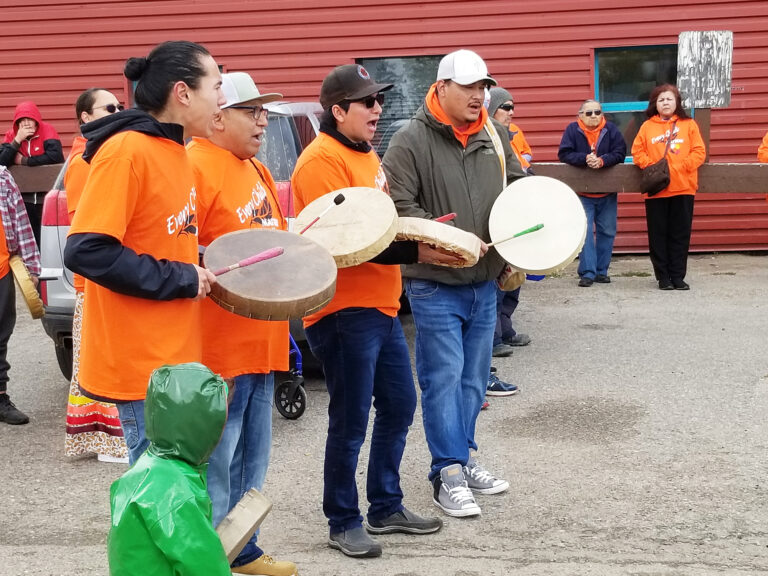
On Orange Shirt Day, Penny Constant can’t help but think of her father, a residential school student.
As an adult, he rarely spoke about his experience before he passed away. Now, Constant said she’s only starting to understand how the experience affected him and his children.
“When we were young children, he wouldn’t speak his Cree language around us,” Constant remembered. “He was taught to be ashamed of it. Now, as an adult, when I hear people speaking the language, there’s a yearning to know what they’re saying, to be able to speak the language.”
Constant isn’t alone either. On Wednesday, she was one of many Prince Albert residents who came out to participate in the Prince Albert Grand Council’s honour walk in memory of the victims of residential schools.
Participants included everyone from local Prince Albert residents like her, to former pro hockey player Fred Sasakamoose—the first Indigenous player to suit up for an NHL team.
Constant stressed that the walk isn’t about pity. The goal is to honour the students who died during their residential school experience, and help educate the rest of Canada about how those experiences still affect the country today.
“It’s not the pity that we look for—it’s understanding and compassion,” she explained. “We didn’t choose this way of life. We didn’t choose for our ancestors to lose their parenting skills, our traditions and our culture, because that’s one of the things—as an Indigenous person—I’m just learning the value of.”
The first residential school opened in Brantford, Ont. in 1831. At its peak, there were 80 schools in operation in every province and territory except Newfoundland, Prince Edward Island and New Brunswick.
A total of 130 schools were opened in Canada, with the last one closing in Punnichy, Sask. in 1996. It’s estimated that more than 6,000 children died while attending those schools, a number partially based on government records.
“We try to make people aware that this did happen. We try to make people understand,” said George Mirasty, a residential school survivor from Prince Albert. “(Orange Shirt Day) brings back memories. I remember looking north. I knew that’s where my home was when I was about six years old, when I was taken away.”
These days, Mirasty works as a residential school worker, who helps former students deal with the trauma they experienced in those schools. He describes his work as emotional support, and said Canadian residents need to realize that a lot of Indigenous people are still working through those negative experiences.
They also need to realize a lot of students who died, and walks like this one help honour their memory.
“It symbolizes all the ones … that did go to school and while they were in school, there were some that didn’t make, it,” he said. “It’s sort of a memorial.”
Both Mirasty and Constant say they hope Canadian residents will take the initiative to learn about residential schools and the impact they had on Indigenous people. They say it’s shouldn’t be left to the schools to simply teach the history. It needs to be talked about in the justice system, the law enforcement system, the business world and at home.
“I think that’s a big part of education,” Constant said. “It’s not only in the school system, but in all our systems.”
The Orange Shirt Day movement began in 2013 in honour of Phyllis Webstad, an Indigenous girl who attended St. Joseph Mission Residential School in Williams Lake, B.C. Webstad was six years old, and arrived at school wearing a brand new orange shirt, but the mission oblates took her new shirt and replaced it with a school uniform. Webstad would later remember her one year at St. Joseph as one of the worst of her life.
“That feeling of worthlessness and insignificance ingrained in me from my first day at the mission affected the way I lived my life for many years,” Webstad later said. “Even now, when I know nothing could be further from the truth, I still sometimes feel that I don’t matter.”
